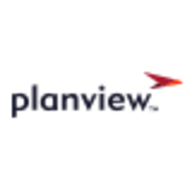

Find out in this report how the two Enterprise Agile Planning Tools solutions compare in terms of features, pricing, service and support, easy of deployment, and ROI.
| Product | Market Share (%) |
|---|---|
| JIRA Portfolio | 1.2% |
| Microsoft Azure DevOps | 38.1% |
| GitLab | 28.6% |
| Other | 32.099999999999994% |
| Product | Market Share (%) |
|---|---|
| Planview Portfolios | 7.1% |
| ServiceNow Strategic Portfolio Management | 9.6% |
| Planisware | 9.5% |
| Other | 73.8% |


| Company Size | Count |
|---|---|
| Small Business | 15 |
| Midsize Enterprise | 12 |
| Large Enterprise | 32 |
| Company Size | Count |
|---|---|
| Small Business | 3 |
| Midsize Enterprise | 2 |
| Large Enterprise | 58 |
Jira Portfolio is an agile roadmapping tool designed to help teams build plans, envision the big picture, track progress, and share the process with stakeholders.
Jira Portfolio is planned based. A plan in Portfolio is a complete view of the tasks, teams, and release dates for your Jira projects.
Once you start to create a plan, there are three main factors you need to define:
With Jira Portfolio, you can create a visual timeline to gain visibility across each of your teams and projects in a single place from a granular level and review cross-team and cross-project dependencies to prevent bottlenecks. This visibility can help you plan realistic release dates and manage your team’s capacity. The solution allows you to try out different scenarios with your roadmap and resources to help guide your decision making. Once you have a solid plan, you can easily integrate with Jira Software and commit your changes.
Jira Portfolio allows managers to easily add team members. The tool’s powerful scheduling algorithm assigns tasks to teams while taking priorities and dependencies into account so it can create a realistic forecast for project completion.
Jira Portfolio Benefits
Some of the top benefits of using Jira Portfolio include:
Reviews from Real Users
Jira Portfolio stands out among its competitors for a number of reasons. Two major ones are its roadmap creation tools and its flexibility.
Meeta L., a lead product manager at a tech vendor, says, “The valuable features of the JIRA Portfolio are the customization it provides which is very useful and the Agile project management capability.”
Juan P., a senior IT project manager at Avantica, writes, “Portfolio helps us increase the visibility of projects' status and management with remote workers who make up most of the company.”
Planview Portfolios offers a comprehensive platform for managing IT, project and resource management, along with strategic planning. The tool focuses on optimizing resource allocation and financial analysis, supporting global operations.
Organizations use Planview Portfolios to streamline project tracking from inception to completion, enhancing strategic alignment with corporate objectives. The tool integrates with platforms like JIRA to provide seamless workflows and supports critical business processes, including budgeting and capacity planning. Teams benefit from customized configurations and robust reporting, further supporting effective decision-making. Despite its strengths, improvements are sought in navigation, documentation, and integration capabilities.
What are the key features?In industries like IT and project management, Planview Portfolios supports complex portfolio handling, ensuring visibility across global operations. Companies in these sectors leverage its strategic planning tools for strategic alignment and resource management, integrating with existing systems for improved process efficiency.
We monitor all Enterprise Agile Planning Tools reviews to prevent fraudulent reviews and keep review quality high. We do not post reviews by company employees or direct competitors. We validate each review for authenticity via cross-reference with LinkedIn, and personal follow-up with the reviewer when necessary.